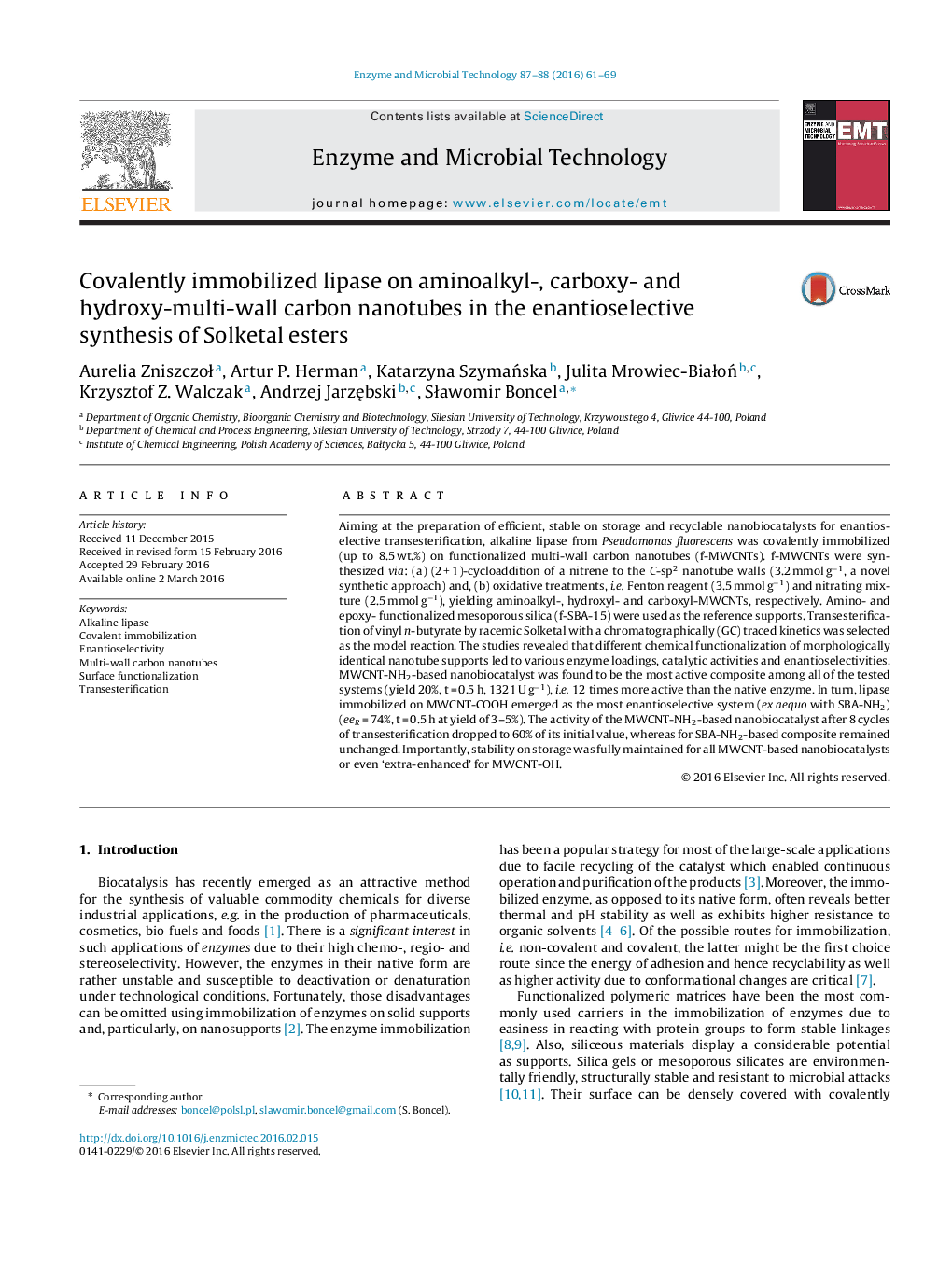| کد مقاله | کد نشریه | سال انتشار | مقاله انگلیسی | نسخه تمام متن |
|---|---|---|---|---|
| 16816 | 42614 | 2016 | 9 صفحه PDF | دانلود رایگان |
• Covalent immobilization of Amano Lipase (8.5 wt%) on f-MWCNTs (C10H20NH2, OH, COOH).
• MWCNT-NH2-based biocatalyst found as the most active (yield 20%, 0.5 h, 1321 U/g).
• MWCNT-COOH-based composite was the most enantioselective (ee = 74%, 0.5 h yield 3–5%).
• Activity on 8-month storage was maintained or enhanced for f-MWCNT-based systems.
• Activity of MWCNT-NH2- vs SBA-NH2-enzyme after 8 cycles was 60% vs 98%.
Aiming at the preparation of efficient, stable on storage and recyclable nanobiocatalysts for enantioselective transesterification, alkaline lipase from Pseudomonas fluorescens was covalently immobilized (up to 8.5 wt.%) on functionalized multi-wall carbon nanotubes (f-MWCNTs). f-MWCNTs were synthesized via: (a) (2 + 1)-cycloaddition of a nitrene to the C-sp2 nanotube walls (3.2 mmol g−1, a novel synthetic approach) and, (b) oxidative treatments, i.e. Fenton reagent (3.5 mmol g−1) and nitrating mixture (2.5 mmol g−1), yielding aminoalkyl-, hydroxyl- and carboxyl-MWCNTs, respectively. Amino- and epoxy- functionalized mesoporous silica (f-SBA-15) were used as the reference supports. Transesterification of vinyl n-butyrate by racemic Solketal with a chromatographically (GC) traced kinetics was selected as the model reaction. The studies revealed that different chemical functionalization of morphologically identical nanotube supports led to various enzyme loadings, catalytic activities and enantioselectivities. MWCNT-NH2-based nanobiocatalyst was found to be the most active composite among all of the tested systems (yield 20%, t = 0.5 h, 1321 U g−1), i.e. 12 times more active than the native enzyme. In turn, lipase immobilized on MWCNT-COOH emerged as the most enantioselective system (ex aequo with SBA-NH2) (eeR = 74%, t = 0.5 h at yield of 3–5%). The activity of the MWCNT-NH2-based nanobiocatalyst after 8 cycles of transesterification dropped to 60% of its initial value, whereas for SBA-NH2-based composite remained unchanged. Importantly, stability on storage was fully maintained for all MWCNT-based nanobiocatalysts or even ‘extra-enhanced’ for MWCNT-OH.
Figure optionsDownload as PowerPoint slide
Journal: Enzyme and Microbial Technology - Volumes 87–88, June 2016, Pages 61–69
